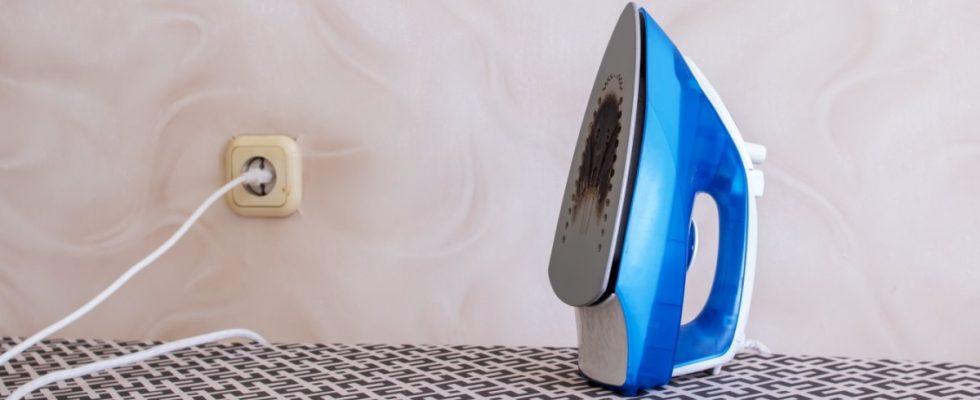Wouldn’t it be nice if inventor Q, who is the head of research and development for the British secret service in the James Bond films, could come up with something realistic and practical instead of cars with firing systems? A secret weapon for everyday life? For example, a self-propelled iron that not only knows where the creases belong, but also recognizes which textile needs to be ironed and at what temperature without burning it. But the reality is different: Only in commercials do irons glide weightlessly over the laundry, almost without the intervention of a human hand. After a certain period of use, some irons can only be pushed over blouses and shirts with a lot of muscle strength.
The reason for this is a dark coating on the soleplate of the iron. It forms when synthetic fabrics or printed T-shirts are ironed too hot. You can feel it straight away, the iron slows down and gets stuck on your clothes. Many delicate pieces of lingerie or collector’s shirts have been ruined this way. The residue burns on and ironing becomes strenuous work that can lead to neck and shoulder tension.
Lemon juice, vinegar, baking soda or toothpaste can help
It doesn’t have to come to that. The internet is full of tips on how to remove burnt-in residue on the soleplate. The most frequently mentioned are old acquaintances: lemon juice, vinegar, baking soda, toothpaste. Youtuber Alex, for example, recommends moistening a cotton cloth with water, then spraying it with vinegar and sprinkling a thin layer of baking soda over it. Now iron over the cotton cloth at the lowest setting until the iron is clean.
If you want to try it with toothpaste: apply the mixture to the cold or lukewarm iron and polish with a soft cloth until all residues are removed. Instead of toothpaste, thanks to the included cleaning agents, a polishing paste is also suitable for steel, chrome and aluminum. A kitchen roll soaked in vinegar also works: place the iron with the crusty side on it and let the vinegar work for a while. This method is also suitable for Teflon-coated soleplates. After cooling, wipe with a damp sponge or soft cloth and, if necessary, clean the steam holes with a cotton swab.
If you have sturdy aluminum foil at hand: place the foil on the ironing board with the dull side facing up and carefully move the iron back and forth at the highest setting. The initial frictional resistance decreases after a short time and the iron glides effortlessly over the film. This way you kill two birds with one stone: the coatings come off and the metal surface is polished smooth.
If you already have shoulder-arm syndrome, you might want to switch to a steamer or steam straightener, a steam nozzle whose shape is somewhat reminiscent of a hairdryer. You move the device effortlessly over shirts, blouses and other ironed laundry, which the steamer steams with hot, moist air and thus makes them wrinkle-free. A little miracle device that could easily be from Q.
The author finds ironing to be meditative; she listens to music and drinks tea while doing it.
(Photo: Bernd Schifferdecker (illustration))

